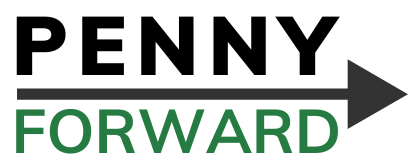This post was originally published to Benzinga on .

The S&P 500 is widely recognized as the best single gauge of large-cap U.S. equities. The index consists of the top 500 companies in the U.S. listed on major stock exchanges as per their market capitalization. Here are Benzinga’s recommendations for the best S&P 500 index funds.
Quick Look at the Best S&P 500 Index Funds:
7 Best S&P 500 Index Funds
We selected seven different index funds using the S&P 500 (or a minor variation) as a benchmark based on categories like expenses, liquidity or dividends. By varying the criteria, there should be a suitable fund among these choices for investors of all risk levels and timelines.
1. Best for Low Expenses: SPDR Portfolio S&P 500 ETF (ARCA: SPLG)
Investors are probably more familiar with the SPDR S&P 500 ETF Trust (NYSE: SPY), which was the first S&P 500 ETF to be traded on public markets. However, SPY is more of a short-term vehicle with a large-scale options market; SPLG is more for buy-and-hold investors with a lower expense rate.
Why We Picked It: SPLG has a 0.02% expense rate, making it the cheapest S&P 500 index fund available on exchanges. Although it has fewer assets than SPY, it tracks the same index for less than 30% of the cost.
The SPDR S&P 500 ETF is among the largest and most heavily-traded ETFs in the world. It exposes your portfolio to large-cap U.S. companies such as Apple, Microsoft, Amazon and Facebook. While the SPDR S&P 500 ETF can be promising for long-term investors, it is more popular among active day traders as a way to balance their portfolios between risky and safe assets.
2. Best for Liquidity: iShares Core S&P 500 ETF (ARCA: IVV)
SPY isn’t our pick here either – that goes to the iShares Core S&P 500 ETF. While both funds are comparable regarding assets under management, the expense ratio of IVV makes it tough to beat.
Why We Picked It: IVV has become a go-to fund for both long-term investors and short-term traders. Its 0.03% expense rate is a third of what SPY charges. While SPY trades nearly 50 million shares daily, IVV’s nine million daily average provides plenty of liquidity at a much lower cost.
The iShares Core S&P 500 ETF exposes your portfolio to large and established U.S. companies. These companies include Alphabet, Berkshire Hathaway, Johnson & Johnson and Visa. This ETF can be profitable for buy-and-hold investors in the long run.
3. Vanguard S&P 500 ETF (NYSEARCA: VOO)
Open to trade since 2010, Vanguard S&P 500 exposes your portfolio to mega-cap companies in the U.S. These companies include Microsoft, Procter & Gamble Co., NVIDIA Corp. and Mastercard.
4. iShares S&P 500 Growth ETF (NYSEARCA: IVW)
The iShares S&P 500 Growth ETF exposes your portfolio to stocks from industries such as information technology, consumer discretionary, communication and health care. These companies are still in the early stages of their life cycle and offer tremendous profit potential to young investors.
5. SPDR Portfolio S&P 500 Growth ETF (NYSEARCA: SPYG)
The SPDR Portfolio S&P 500 Growth ETF seeks to provide investment results that correspond to the total return performance of the S&P 500 Growth Index. It exposes you to large-cap U.S. companies such as Mastercard, Adobe, PayPal and Salesforce.com.
7. Best Overall: Vanguard S&P 500 ETF (ARCA: VOO)
Finally, our favorite S&P 500 ETF is among the most traded in U.S. capital markets. Vanguard’s VOO is an index ETF tracking the S&P 500 as closely as possible for a very low fee. The fund began trading in 2010 and has amassed nearly $600 billion in assets since its inception.
Why We Picked It: VOO remains one of the best S&P 500 index funds. Its 0.03% expense ratio is the lowest in the asset class and has ample trading volume and assets for liquidity. VOO is a winner for anyone looking to get started on their investing journey.
3. Best for Mutual Funds: Fidelity 500 Index Fund (MUTF: FXAIX)
Mutual funds aren’t as efficient as ETFs due to capital gains distributions, especially in taxable accounts. For savers in tax-deferred vehicles like 401(k) accounts, mutual funds are a good way to build wealth and the Fidelity 500 Index Fund offers affordable exposure from a well-known issuer.
Why We Picked It: FXAIX has a 0.015% expense ratio, giving it the lowest fee of any S&P 500 index fund. Although its mutual fund wrapper makes it inefficient in a taxable account, it’s a good foundational asset in a 401(k).
4. Best for Dividends: Schwab U.S. Dividend Equity ETF (ARCA: SCHD)
Dividends become vital to an investment plan when time horizons shrink and income becomes more crucial than capital growth. Funds like SCHD narrow their holdings to only the companies growing their dividends, often at the expense of more growth-oriented companies.
Why We Picked It: SCHD has a lower expense ratio (0.06%) than most dividend-focused funds and it still provides exposure to large-cap U.S. dividend payers.
5. Best for Growth: Vanguard Growth ETF (ARCA: VUG)
Some funds tweak their benchmark to focus on the more growth-oriented S&P 500 companies, mainly by having increased exposure to sectors like tech. Usually, investors must pay higher expenses for growth stocks, but VUG only charges a 0.04% expense rate.
Why We Picked It: VUG provides a great combination of everything you need in a growth ETF – a low expense rate, ample liquidity and exposure to the fastest-growing large-cap U.S. companies.
6. Best for Value: SPDR Portfolio S&P 500 Value ETF (ARCA: SPYV)
If you want a fund that concentrates more on value than growth, consider SPYV from State Street. In many ways, SPYV is the inverse of Vanguard’s VUG, focusing on undervalued companies based on metrics like P/E ratios and debt levels.
Why We Picked It: SPYV has the same expense rate as the Vanguard Value ETF (ARCA: VTV), but it trades more shares daily on average and holds 60 more stocks in its portfolio.
Why are S&P 500 index funds popular?
S&P 500 index funds have surged in popularity for several compelling reasons:
- Low Fees (Expense Ratios)
Index funds attempt to match the performance of the S&P 500, the leading market index in the United States. These funds don’t require extensive research or active trading decisions, leading to significantly lower management fees than actively managed funds. These lower costs directly translate into higher returns for investors.
- Diversification
The S&P 500 comprises 500 of the US’s largest publicly traded companies (with 505 stocks, thanks to five companies with multiple share classes). These companies span various sectors, such as technology, health care, finance, etc. Investing in an S&P 500 index fund provides instant diversification across numerous companies, reducing the risk associated with individual stock performance.
- Historical Performance
The S&P 500 has a strong track record of long-term growth. While past performance isn’t a guarantee of future results, this historical trend instills confidence in investors. Many actively managed funds struggle to outperform the S&P 500 over long periods after accounting for their higher fees.
How to Invest in S&P 500 Index Funds
To invest, you’ll first need to define your investment goals, such as your time horizon, risk tolerance and the amount of capital you can afford to put in the market. Then, research and select an S&P 500 index fund, considering factors like expense ratios, liquidity, dividends and tracking error. Finally, choose a brokerage that suits your needs and offers features like research tools and multiple account types.
Once you’ve chosen an account, you must fund it with capital and invest in the selected S&P 500 index fund. Consider dollar-cost averaging by investing a regularly fixed amount to mitigate market fluctuations. Finally, monitor your investments and rebalance your portfolio periodically to maintain your desired asset allocation.
What’s the Difference Between S&P 500 Index Mutual Funds and S&P 500 ETFs?
S&P 500 mutual funds and exchange-traded funds (ETFs) both track the performance of the S&P 500, but these securities have fundamentally key differences:
- Trading: ETFs trade throughout the open session on exchanges like stocks and options, while mutual funds trade only once net asset value (NAV) is calculated at the end of the day.
- Fees: ETFs generally have lower expense ratios and usually trade commission-free.
- Flexibility: ETFs offer greater trading flexibility but may involve higher trading costs due to spreads.
Choose an index mutual fund if you prefer buy-and-hold and prioritize low trading costs. Choose an ETF if you need flexibility and are comfortable with intraday trading.
S&P 500 Index Funds Offer Affordable and Simple Diversification
The stock market isn’t the economy, but the S&P 500 might be our best proxy. The index changes a few times a year to ensure the top 500 companies are included and it offers more diversification than the Dow Jones Industrial Average and less volatility than the Nasdaq composite.
S&P 500 index funds are often the most affordable and straightforward investment options but aren’t without risk. The S&P 500 lost more than 20% in 2022, so even careful compounders had to watch their portfolios plummet for a sustained stretch. Consider your time horizon when investing and consult with an advisor, even with something as simple as S&P 500 index funds.
Frequently Asked Questions
A
Depending on your investment plans and time horizon, you may only need a single fund to meet your goals. Check with your advisor for the best way to allocate your assets.
A
S&P 500 index funds have low fees and ample diversification, making them ideal assets for long-term investors and retirement savers.
A
Yes, standard taxable brokerage accounts can be used to purchase S&P 500 index mutual funds and exchange-traded funds.

Leave a Reply